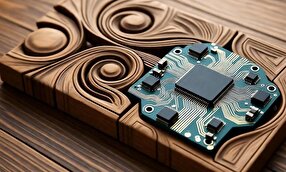Iranian Scientists Develop Advanced Microchip to Treat Male Infertility

The design and construction of this microchip is the result of a research by Mohammad Mehdi Tekiyeh, a graduate of the Department of Mechanical Engineering at the University of Tehran, supervised by Mehdi Moqimi Zand, a member of the Faculty of Mechanical Engineering at the University of Tehran.
“This device consists of four chambers connected to each other by a network of microchannels and optimized to have a low shear rate; this feature is essential to reduce damage to sperm and support the selection of high-quality motile sperm," Moqimi Zand said.
Noting that the main mechanism of this device is based on the phenomenon of rheotaxis in which motile sperm exhibit the ability to move in the opposite direction of fluid flow, he said, “Rheotaxis is a natural behavior of sperm that indicates their high motility and viability. By exploiting this behavior, the device allows healthy, motile sperm to migrate to designated chambers and concentrate there without the need for additional preparation steps.”
“This new method, unlike conventional methods, does not require washing or pre-processing,” Moqimi Zand said.
“Also, this device uses another inherent characteristic of sperm, namely the tendency to swim near the boundaries, to increase the separation rate of better quality sperm,” he added.
In a relevant development in January, Iranian researchers from Royan Research Institute and the University of Tehran had also designed an electrical microsensor that detects high-quality human eggs to help treat infertility.
In a joint study conducted at the Faculty of Electrical and Computer Engineering of the University of Tehran, and the Reproductive Sciences Center of Royan Research Institute, a simple electrical microsensor was designed and built to detect high-quality mouse eggs.
This electrical device predicts egg quality by using three electrical properties of the egg membrane, egg radius, and the thickness of the zona layer surrounding the egg.
To evaluate the effectiveness of this microsensor, the predictions made by it were compared with the evaluation of an embryologist.
Royan Research Institute announced that the results of this study were published in the journal Lab Chip in 2024.
4155/v





















